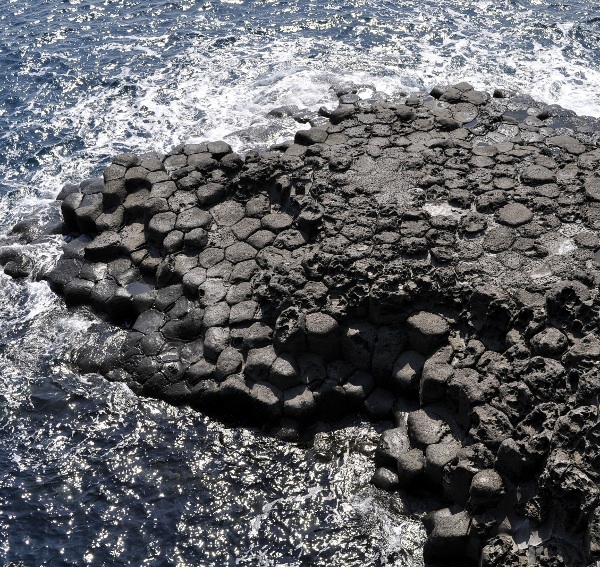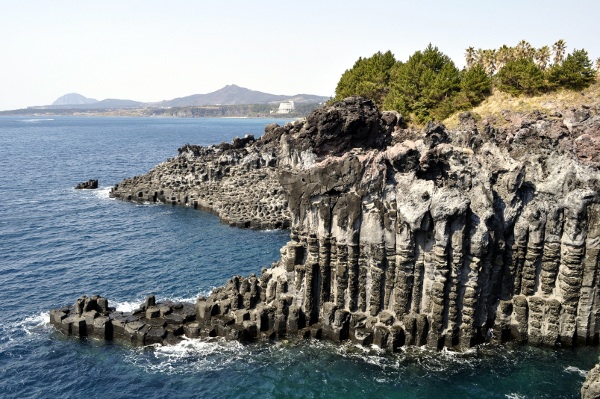|
| |
 |
|
| ▲ Daepo Columnar Joint. Photo by Dr. Jeon Yong Mun |
Sarah Warren's full story will be in print and online at the end of the week. -- Ed.
Jeju’s coastline is one of the most diverse in the world. From black-sand beaches to white-sand and blue-water coves, to rough and rocky basalt cliff faces and rolling black shores, this little island is a geological rainbow of phenomena.
A section of Jeju’s coastline that has caught the eye of many geologists and sightseeing adventurists is the Daepo-dong coast in Jungmun, Seogwipo City. Here you can find well-developed columnar joints formed by the spewing of lava from the Nokhajiak oreum (volcanic cone) about 140,000 to 250,000 years ago.
Columnar joints are naturally formed heptagonal, hexagonal or square vertical pillars made from rapidly cooling lava. There are two types of lava: Pahoehoe lava, which is water-like and flows quickly, and Aa lava, which is thick and viscous, and flows slowly like honey, says Dr. Jeon Yong Mun of the World Natural Heritage Management Bureau.
Pahoehoe lava is what forms lava tubes, while Aa lava is what forms columnar joints, says Dr. Jeon.
| |
 |
|
| ▲ Photo by Dr. Jeon Yong Mun |
| |
 |
|
| ▲ Photo by Dr. Jeon Yong Mun |
Typical Aa lava is about 10 metres thick, says Dr. Jeon. If it cools rapidly to about 900 Celsius, it contracts, or shrinks and shrivels. This contracting causes the rock to crack. Depending on the direction of the crack or split, the joints are divided into horizontal layers, called sheet joints, or vertical columnar joints.
Columnar joints are developed when the lava flow’s surface cools, specifically, from the top down, as well as the bottom up, meeting in the centre, sometimes haphazardly or only slightly irregularly, like the touching of finger tips, says Dr. Jeon. The Daepo Columnar Joint is, in general, slightly irregular. The top cooled layer of columns is about six metres thick, while the bottom cooled layer of columns is about 4 metres thick. These parallel columns are called “colonnade.”
|






















